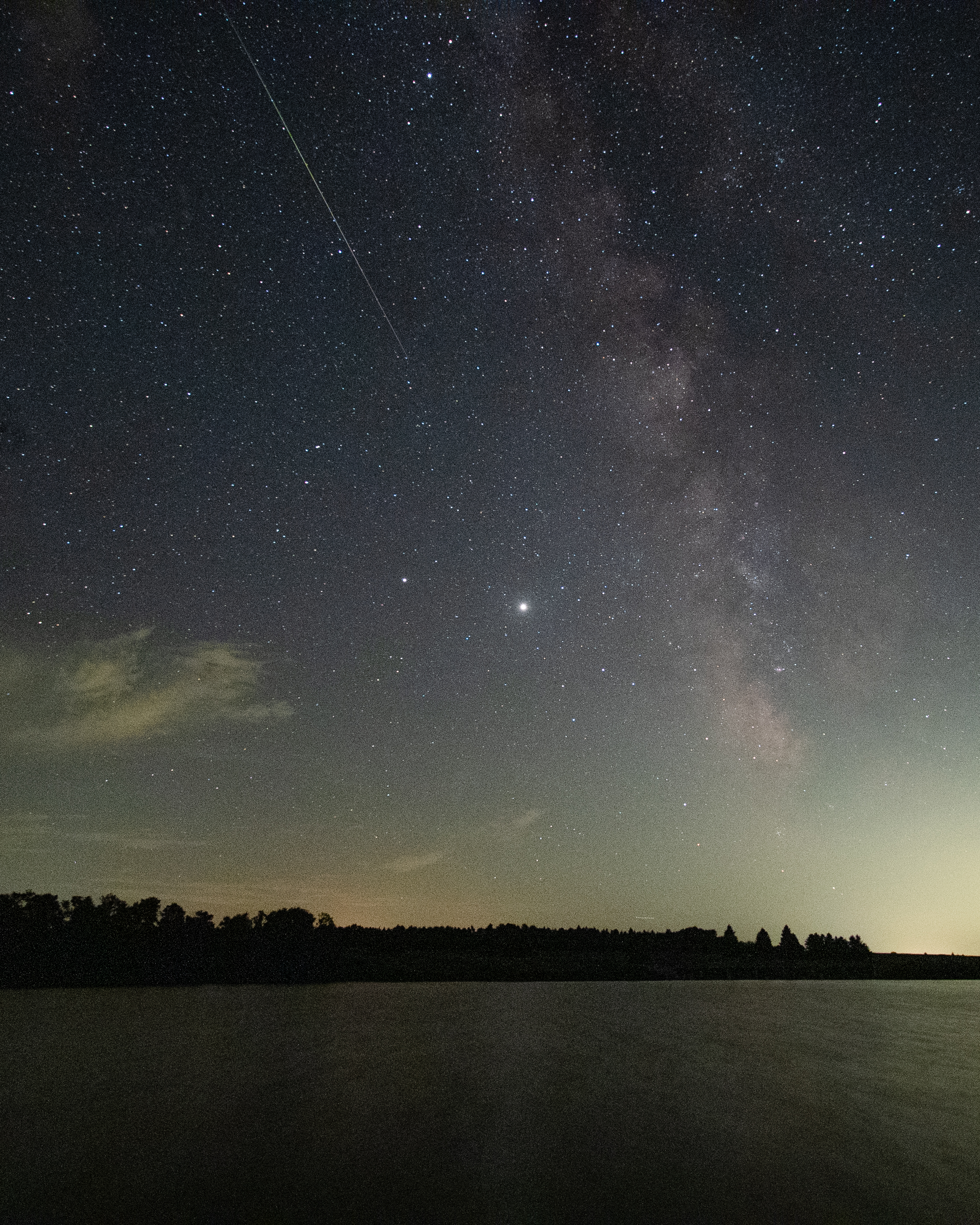
Every year in August the Earth passes through a comet debris field, and when a grain of comet dust falls through the atmosphere it heats up and vaporizes, showing as a streak of light and sometimes leaving a glowing trail. We enjoy seeing them as “falling stars”.
This year, as part of our Covid-coping strategy, we were on a two-day camping trip to a state park during the meteor shower. It was a fortuitous coincidence, unexpectedly accompanied by clear weather. I set up some cameras hoping to capture the meteors, but they were elusive. As a consolation, I assembled the frames into a timelapse and although only a few frames caught meteors, they did capture some of the other beautiful elements of the night sky.
The brightest star is actually planet Jupiter, and it has a bright companion to the left, Saturn. The Milky Way is visible as it moves slowly across the sky with them. Some of the bright spots move more rapidly. The steady ones are satellites, the others are airplanes. Mid- and high level clouds form, move, and evaporate over the duration of the timelapse (3-1/2 hours).
A meteor itself is a momentary flash, leaving a faint streak on the image frame. A sharp-eyed observer may find some in the video, but it only shows as one frame among the 30 per second. One such frame has been extracted, showing a meteor strike seemingly aimed at Jupiter.
I have accidentally enjoyed the Perseids throughout my life, as I have often been on camping and backpacking trips in August. The night sky is awe-inspiring in any dark sky site and it is all the more so when accented by the long bright streamers created as we travel through comet dust.


Hey, Thor, I have been particularly enjoying Jupiter and Suturn over the past 2-3 weeks, and have noted random meteors away from Persied region…. once I saw 2 in a minute and at 90 degrees from each other: most unusual, for me at least
Sent from my iPhone
>